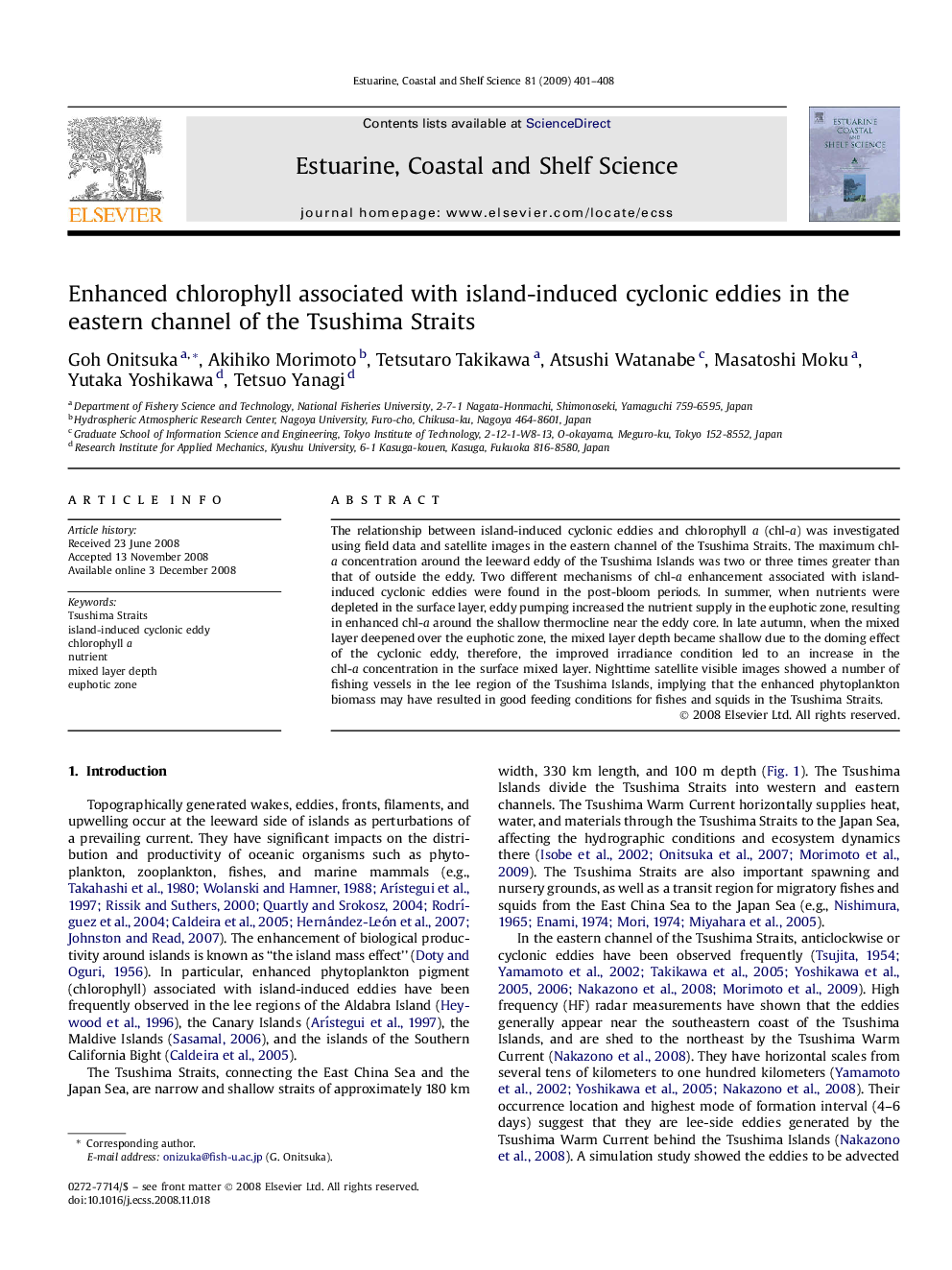| Article ID | Journal | Published Year | Pages | File Type |
|---|---|---|---|---|
| 4541415 | Estuarine, Coastal and Shelf Science | 2009 | 8 Pages |
The relationship between island-induced cyclonic eddies and chlorophyll a (chl-a) was investigated using field data and satellite images in the eastern channel of the Tsushima Straits. The maximum chl-a concentration around the leeward eddy of the Tsushima Islands was two or three times greater than that of outside the eddy. Two different mechanisms of chl-a enhancement associated with island-induced cyclonic eddies were found in the post-bloom periods. In summer, when nutrients were depleted in the surface layer, eddy pumping increased the nutrient supply in the euphotic zone, resulting in enhanced chl-a around the shallow thermocline near the eddy core. In late autumn, when the mixed layer deepened over the euphotic zone, the mixed layer depth became shallow due to the doming effect of the cyclonic eddy, therefore, the improved irradiance condition led to an increase in the chl-a concentration in the surface mixed layer. Nighttime satellite visible images showed a number of fishing vessels in the lee region of the Tsushima Islands, implying that the enhanced phytoplankton biomass may have resulted in good feeding conditions for fishes and squids in the Tsushima Straits.
